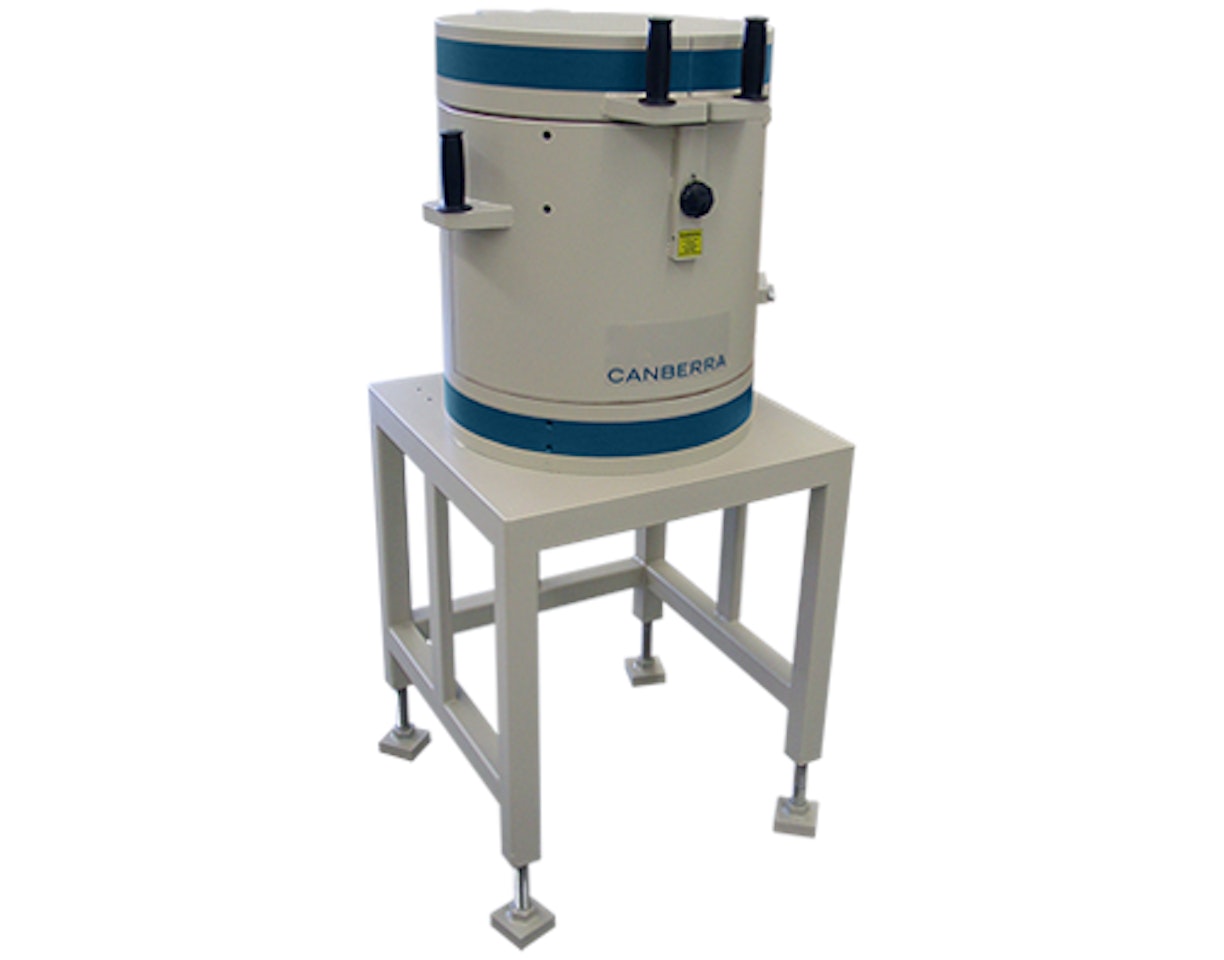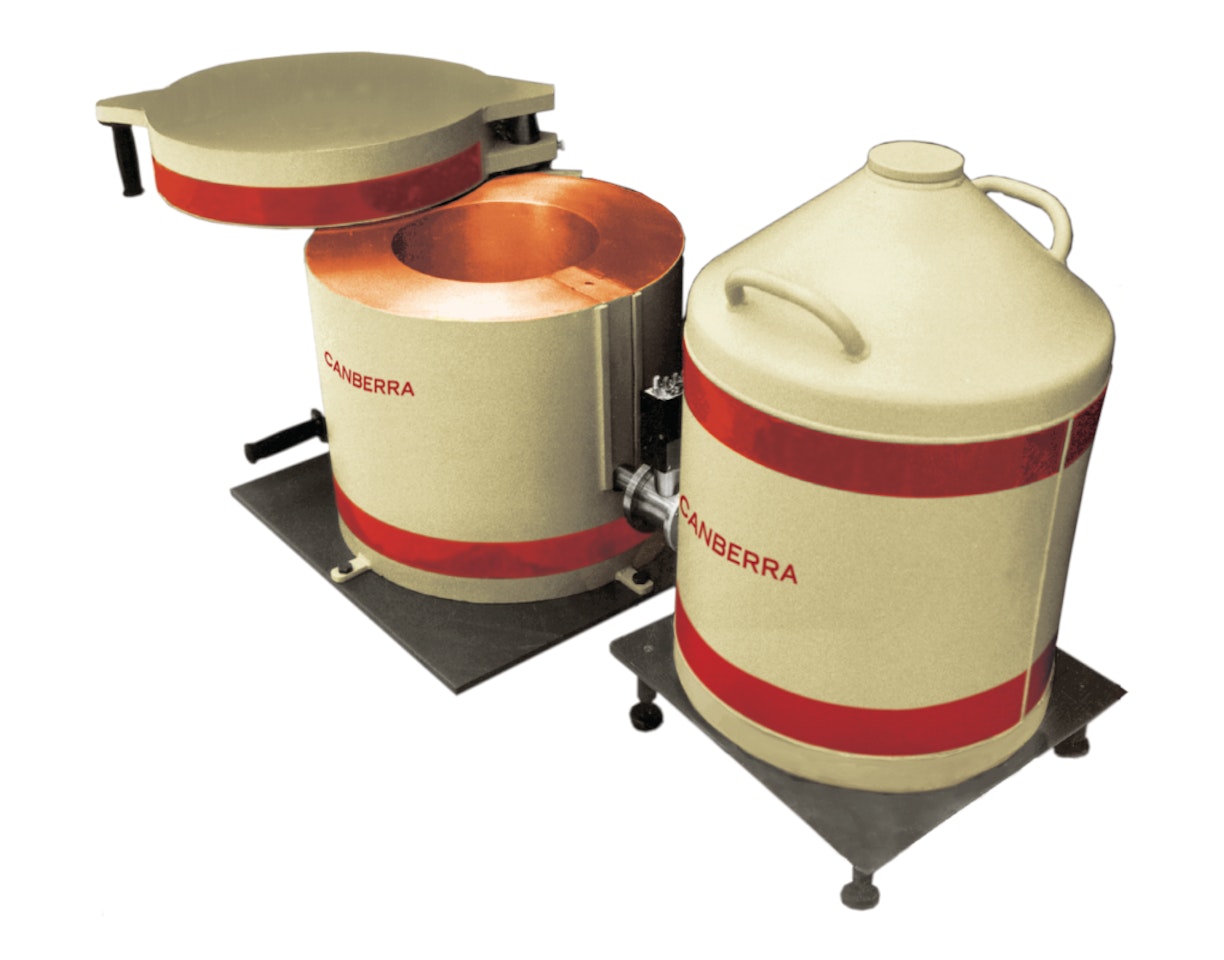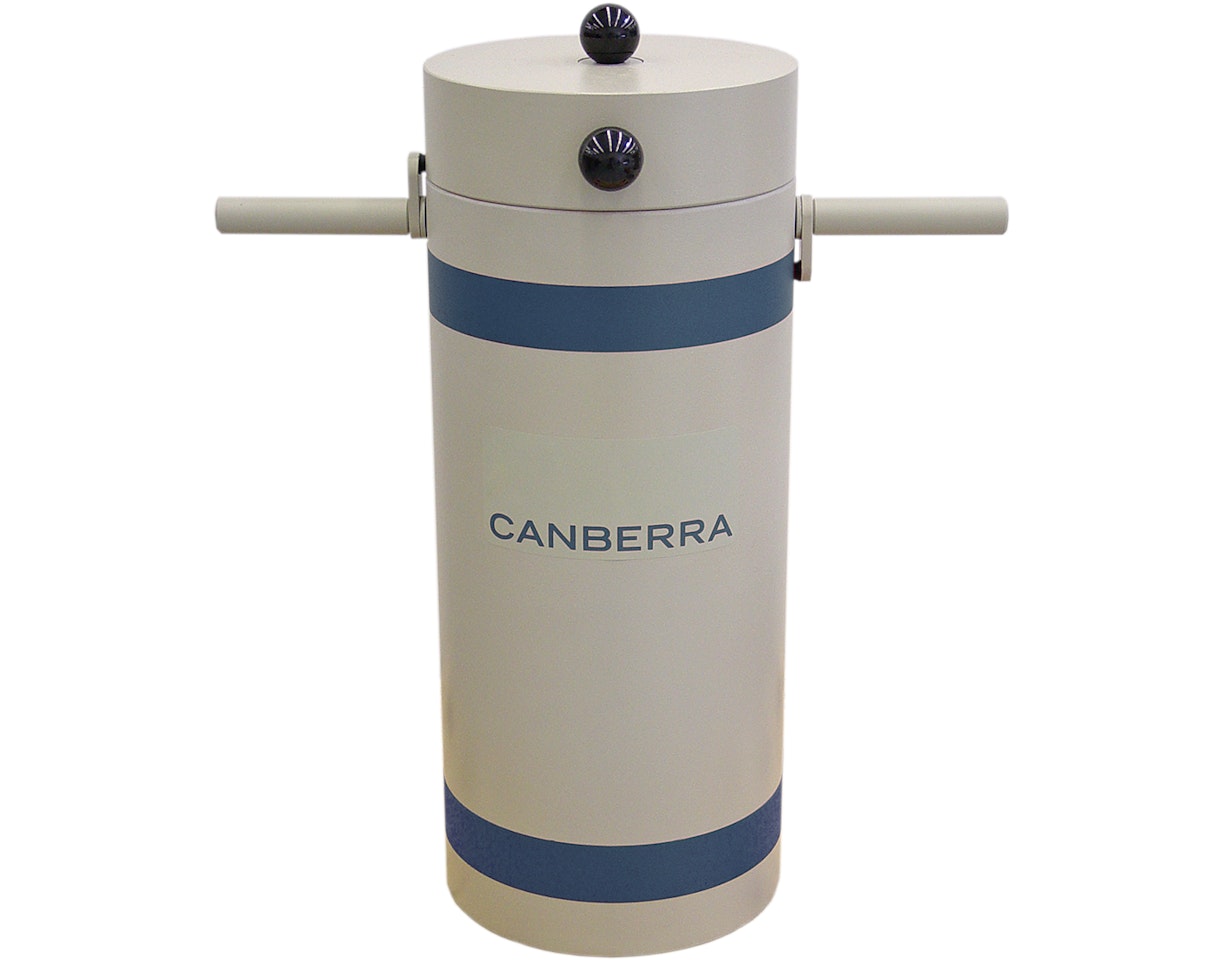Description
The Mirion CosmicGuard device is a simple add-on to any new or existing High Purity Germanium (HPGe) counting system that includes a Lynx Digital Signal Analyzer and Genie or Apex-Gamma spectroscopy software. The fully self-contained guard detector/electronics module either mounts directly onto a lead shield with a solid 50.8 or 55.9 cm (20 or 22 in.) diameter circular lid or via a lift mechanism that clamps to the shield table for top-opening or non-circular shields. The system connects directly to the HPGe detector’s Lynx DSA and a controlling Genie or Apex® computer – no NIM or other electronics is needed.
Why is cosmic background reduction important?
Background in gamma spectroscopy systems comes from three main sources: Terrestrial Radiation, Internal Radiation and Cosmic Radiation.
Terrestrial Radiation is driven by K-40, Uranium, and Thorium decay products and is greatly reduced by passive lead shielding.
Internal Radiation can come from the HPGe detector components or from the sample itself due to incomplete energy deposition in the detector (scattering) and from some of the detector/shield components themselves. In many counting systems, the scattering component will be present, although Compton suppression solutions can be applied in some instances to reduce this form of background. Mirion detectors are already built using selected materials to minimize the detector’s contribution to the radiation background. To further reduce this background component Mirion offers cryostat options like Remote Detector Chamber (RDC) or Ultra-Low Background (ULB) materials.
Cosmic Radiation consists of high energy charged particles (such as muons) originating from extraterrestrial sources. This form of background radiation cannot be significantly reduced by passive lead shielding. It is omnidirectional, but primarily vertically oriented. Therefore, a guard detector placed over an HPGe detector’s shield and equipped with anti-coincidence logic can eliminate much of the cosmic contribution to background. In this case, radiation detected in both the guard detector and HPGe detector at the same time can cause those counts from the HPGe detector to be discarded, thus reducing the cosmic background contribution.
Background reduction achieved by the CosmicGuard system ranges from 10 to 35 percent. In fact, a higher background reduction ratio is seen on HPGe detector systems that already have shielding, especially those that include ULB™ cryostat configurations and shields (like the Mirion 777). With other sources of background minimized, the cosmic component of the remaining background can only be reduced with a guard detector-type set-up.








